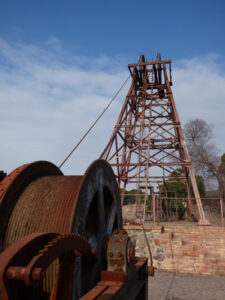 Distributed acoustic sensing or DAS system is a relatively new technology that finds numerous fields of application and has several benefits such as low cost, complete coverage, and repeatability for data collection. The principle of DAS system operation is based on the use of an optical fiber cable instead of geophones in conventional systems for acoustic recording.
Distributed acoustic sensing or DAS system is a relatively new technology that finds numerous fields of application and has several benefits such as low cost, complete coverage, and repeatability for data collection. The principle of DAS system operation is based on the use of an optical fiber cable instead of geophones in conventional systems for acoustic recording.
Compared to traditional geophones, the DAS system demonstrates more advantages during its applications. For example, DAS technology employs a slim optical cable, due to which there are no limits in a horizontal well or ultra-slim well. Also, the cost of fiber optic cables is lower than geophones’.
Moreover, the installation process of optical fiber cables is pretty easy and can include other fiber optic sensors such as distributed temperature sensing and distributed pressure sensing. Herewith, the cables offer continuous data transmission and the DAS system can be employed in the exploration well, production well, and observation well.
In spite of the mentioned benefits, nowadays distributed acoustic sensing has some limitations, for example, the low S/N ratio, channel depth uncertainty, poor transverse fiber sensibility that are an obstacle for future applications. The most frequent DAS applications include:
- vertical seismic profile or VSP;
- microseismic measurements;
- well and reservoir surveillance;
- hydraulic fracturing monitoring, and diagnostics.
Despite the fact that distributed acoustic sensing technology is a highly promising prospect in the oil and gas industry, it requires several improvements for more stable operation. The most crucial problem is the development of the S/N ratio that can be solved by reducing the noise floor, using a stronger acoustic source.
It should be mentioned that distributed acoustic sensing data are connected with the strain amplitude, therefore, this factor allows to enlarge the S/N ratio by coherent stacking and correlation.
Also, removal of the random noise in distributed acoustic sensing can be made with the help of bandpass and median filters. In addition, it is very important to process a huge amount of data quickly, since DAS measurements are excessive. Herewith, DAS technology is often combined with multi-functional optical fiber sensors and the obtained measurements allow making the ambiguity lower.
Optromix is a DAS system manufacturer that provides top of the line distributed acoustic sensing systems suitable for monitoring of commerce networks. If you have any questions or would like to buy a DAS system, please contact us at info@optromix.com

